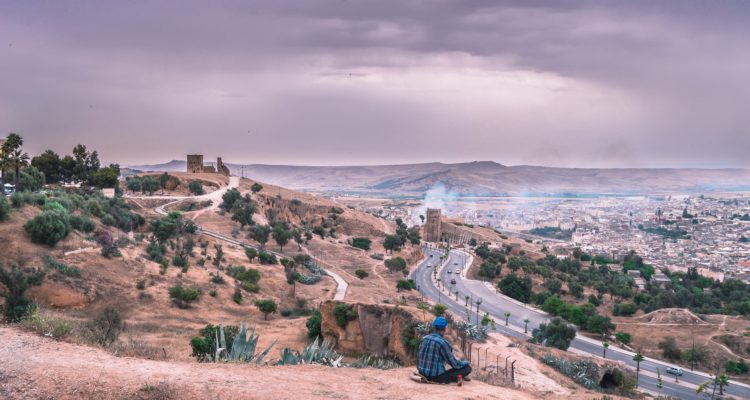The city of Fes, or Fez as it is always known, was established in the ninth century or the late eighth century, during the rule of the Idrissi dynasty. The city soon attracted more than almost 8000 Arab families who had been exiled from Spain. This is today the old city, an ancient, unique and appealing Medina simply means “City” which has two parts the old labeled ” Fas El Bali” and the new named ” Fes El Jedid”. The famous medina sits on the banks of Fez River, it’s the largest medina, along with the Karouine Mosque, which is claimed to be the oldest in Africa (859) and today the largest religious university in Morocco, giving Fez Medina one of the oldest universities in the world.
Most of the Fez Medina’s population were refugees from the Tunisia, Andalusia, Kairouan. Each one built up their own areas inside the medina, generally separated by geographical places, for example, the rolling hills or river. Generally, the city was a mixture of North African Muslims and Jews, who dwelled in what is now known as the Mellah neighborhood.
All through Fez’s long history, the administration of the city often marked the identity of the city. when the Fatimids reigned the city in 917, the Idrissids who recovered the region in 960 soon toppled them. In 985, it was taken by the Ommayyads. Held until 1069, when the Almoravid Sultan “Youssef ibn Tachfin” conquered it and joined the two walled towns into one, he raised one wall around the two towns. At the end, the Merenids move into Fez Medina in 1269, making it their new capital.
This period was the beginning of two centuries of building landmarks and other important structures. The new quarter began under Sultan Abu Youssef in 1437. The city remained stable until 1548 when the Saadians took the old medina and made it a portion of the Moroccan Empire. Marrakesh was the new capital. However, with the rise of the Ottoman Empire, governed by Sultan Suleyman the Magnificent. Fez Medina turned into the capital once more. Taken after by an extreme poverty, Moulay Rashid took control in 1666.
Built with narrow and winding alleyways, the stroll through Fez Medina is a wander back into time – a twisted labyrinth worked to thwart invasions. This city remains a photo of medieval Islamic culture set in present day times. Muslim ladies, particularly in Fez’s past, had the custom of keeping their faces covered from all men except for their families family. Patios which are known as “Riad” were constructed with high walls, which brought about making the alleyways dark, however cool in the summer months. The narrow winding lanes make donkeys, bicycles and mules the chosen methods for transportation. Mosques are in the center of the city with shops and houses around them.
The General Lyautey preserved the oldest quarter of the Fez Medina when the French took control. He set up new regulations that protect the medieval city from present day advancement. Fez’s old Medina is still prioritizing conventional industries, for example, tanneries, textile and flourmills, soap making, alongside oil processing. Olives, grapes, grain and beans are the major crops in this area. Raising sheep, farming, goats and cattle are still a steady lifestyle just along the city’s outskirts.
The Fez Medina has been named to the UNESCO list of World Heritage Sites, and today it’s the most visited area in Morocco both by locals and tourists.

